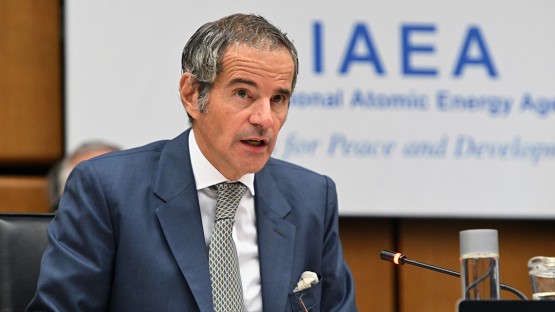In a critical diplomatic effort, Rafael Grossi, the head of the International Atomic Energy Agency (IAEA), is set to arrive in Tehran on Wednesday to address growing concerns over Iran’s nuclear program. With tensions running high in the Middle East, Grossi warned of “narrowing room for manoeuvre” and urged diplomatic solutions to alleviate the risks associated with Iran’s increased nuclear capabilities. The visit marks Grossi’s first trip to Iran since May, and his meetings are expected to center on gaining further transparency into Iran’s nuclear activities.
Grossi’s visit comes in the wake of heightened rhetoric from Israel, which has been vocal about its willingness to strike Iran’s nuclear facilities if it deems necessary. Only days before Grossi’s planned arrival, Israel’s defense minister warned that Iran’s nuclear sites were “more exposed than ever to strikes.” Israel, a longstanding critic of Iran’s nuclear ambitions, asserts that Tehran aims to develop nuclear weapons, although Iran denies this, maintaining that its nuclear activities are solely for peaceful purposes.
Mounting International Concerns over Iran’s Enriched Uranium Levels
Since the United States withdrew from the landmark 2015 nuclear deal in 2018 under former President Donald Trump, Iran has gradually expanded its nuclear program. Originally constrained by the deal to enrich uranium to 3.65% purity, Iran has since increased its reserves to 60% enrichment—close to the 90% threshold required for nuclear weapons development. Grossi, speaking recently to CNN, highlighted the scale of Iran’s nuclear material, emphasizing the importance of “more visibility” into its nuclear activities.
The international community has been closely monitoring these developments. The IAEA retains limited inspection capabilities in Iran, yet Tehran has reduced cooperation with the agency in recent years. Iran deactivated numerous surveillance cameras used by the IAEA and restricted inspector access, leading to calls from the agency for improved transparency and collaboration.
Iran’s Complex Relationship with Nuclear Technology and the West
Iran’s nuclear ambitions date back to a 1950s civil cooperation agreement with the United States under the Shah, which ultimately led to the country’s ratification of the Non-Proliferation Treaty (NPT) in 1970. Under the NPT, Iran committed to declaring its nuclear materials and activities to the IAEA. However, recent regional escalations have prompted some Iranian lawmakers to advocate for a shift in the country’s nuclear policy, calling on Supreme Leader Ayatollah Ali Khamenei to reconsider a religious edict that bans nuclear weapons.
The current Iranian administration, led by President Masoud Pezeshkian, has expressed a willingness to revive the nuclear deal and improve ties with Western nations to alleviate economic sanctions. Despite these intentions, efforts to reinstate the agreement have faced setbacks amid regional conflicts and skepticism from international stakeholders.
A New Era of Geopolitical Challenges
Grossi’s visit also underscores the broader geopolitical implications of nuclear capabilities in the Middle East. With Israel and Iran engaging in sporadic missile strikes, largely linked to regional power dynamics and the ongoing conflict in Gaza, the prospect of a nuclear-armed Iran raises significant security concerns.
The IAEA’s upcoming discussions with Iranian officials represent a critical juncture for diplomacy, and the outcomes could determine the path forward for Iran’s nuclear program. The agency has stated that Grossi’s visit will include “high-level meetings with the Iranian government” and will cover technical discussions on Iran’s compliance and transparency.
As Grossi arrives in Tehran, the stakes for regional stability are high. Iran’s nuclear program, and the international community’s response to it, could shape the future security landscape of the Middle East and influence diplomatic relations on a global scale
